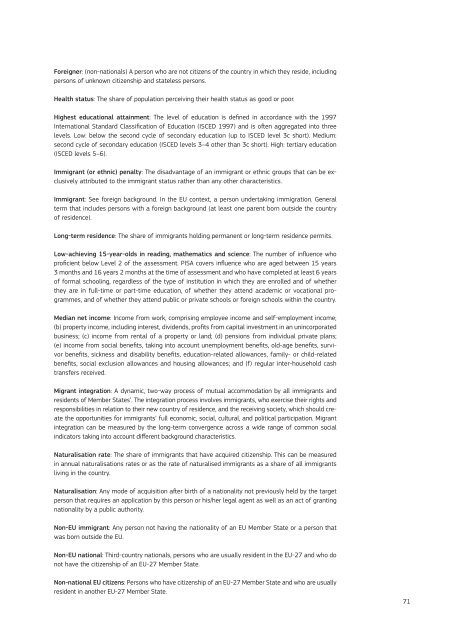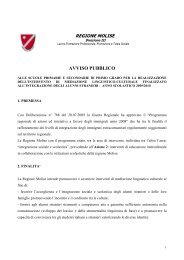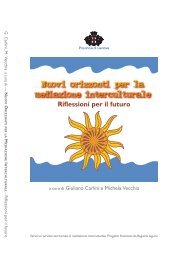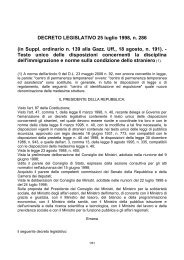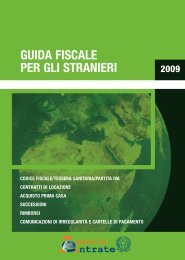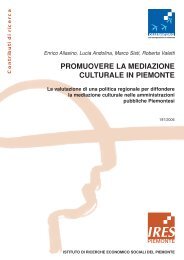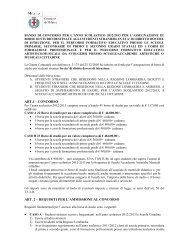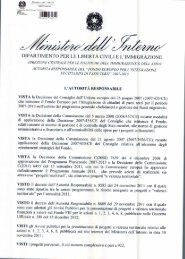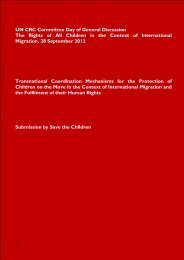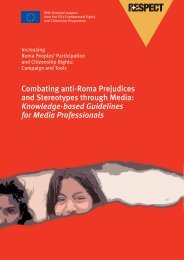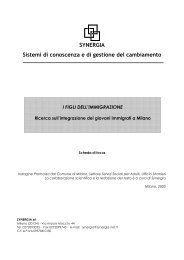Using EU Indicators of Immigrant Integration - European ...
Using EU Indicators of Immigrant Integration - European ...
Using EU Indicators of Immigrant Integration - European ...
- No tags were found...
You also want an ePaper? Increase the reach of your titles
YUMPU automatically turns print PDFs into web optimized ePapers that Google loves.
Foreigner: (non-nationals) A person who are not citizens <strong>of</strong> the country in which they reside, includingpersons <strong>of</strong> unknown citizenship and stateless persons.Health status: The share <strong>of</strong> population perceiving their health status as good or poor.Highest educational attainment: The level <strong>of</strong> education is defined in accordance with the 1997International Standard Classification <strong>of</strong> Education (ISCED 1997) and is <strong>of</strong>ten aggregated into threelevels. Low: below the second cycle <strong>of</strong> secondary education (up to ISCED level 3c short). Medium:second cycle <strong>of</strong> secondary education (ISCED levels 3–4 other than 3c short). High: tertiary education(ISCED levels 5–6).<strong>Immigrant</strong> (or ethnic) penalty: The disadvantage <strong>of</strong> an immigrant or ethnic groups that can be exclusivelyattributed to the immigrant status rather than any other characteristics.<strong>Immigrant</strong>: See foreign background. In the <strong>EU</strong> context, a person undertaking immigration. Generalterm that includes persons with a foreign background (at least one parent born outside the country<strong>of</strong> residence).Long-term residence: The share <strong>of</strong> immigrants holding permanent or long-term residence permits.Low-achieving 15-year-olds in reading, mathematics and science: The number <strong>of</strong> influence whopr<strong>of</strong>icient below Level 2 <strong>of</strong> the assessment. PISA covers influence who are aged between 15 years3 months and 16 years 2 months at the time <strong>of</strong> assessment and who have completed at least 6 years<strong>of</strong> formal schooling, regardless <strong>of</strong> the type <strong>of</strong> institution in which they are enrolled and <strong>of</strong> whetherthey are in full-time or part-time education, <strong>of</strong> whether they attend academic or vocational programmes,and <strong>of</strong> whether they attend public or private schools or foreign schools within the country.Median net income: Income from work, comprising employee income and self-employment income;(b) property income, including interest, dividends, pr<strong>of</strong>its from capital investment in an unincorporatedbusiness; (c) income from rental <strong>of</strong> a property or land; (d) pensions from individual private plans;(e) income from social benefits, taking into account unemployment benefits, old-age benefits, survivorbenefits, sickness and disability benefits, education-related allowances, family- or child-relatedbenefits, social exclusion allowances and housing allowances; and (f) regular inter-household cashtransfers received.Migrant integration: A dynamic, two-way process <strong>of</strong> mutual accommodation by all immigrants andresidents <strong>of</strong> Member States’. The integration process involves immigrants, who exercise their rights andresponsibilities in relation to their new country <strong>of</strong> residence, and the receiving society, which should createthe opportunities for immigrants’ full economic, social, cultural, and political participation. Migrantintegration can be measured by the long-term convergence across a wide range <strong>of</strong> common socialindicators taking into account different background characteristics.Naturalisation rate: The share <strong>of</strong> immigrants that have acquired citizenship. This can be measuredin annual naturalisations rates or as the rate <strong>of</strong> naturalised immigrants as a share <strong>of</strong> all immigrantsliving in the country.Naturalisation: Any mode <strong>of</strong> acquisition after birth <strong>of</strong> a nationality not previously held by the targetperson that requires an application by this person or his/her legal agent as well as an act <strong>of</strong> grantingnationality by a public authority.Non-<strong>EU</strong> immigrant: Any person not having the nationality <strong>of</strong> an <strong>EU</strong> Member State or a person thatwas born outside the <strong>EU</strong>.Non-<strong>EU</strong> national: Third-country nationals, persons who are usually resident in the <strong>EU</strong>-27 and who donot have the citizenship <strong>of</strong> an <strong>EU</strong>-27 Member State.Non-national <strong>EU</strong> citizens: Persons who have citizenship <strong>of</strong> an <strong>EU</strong>-27 Member State and who are usuallyresident in another <strong>EU</strong>-27 Member State.71


